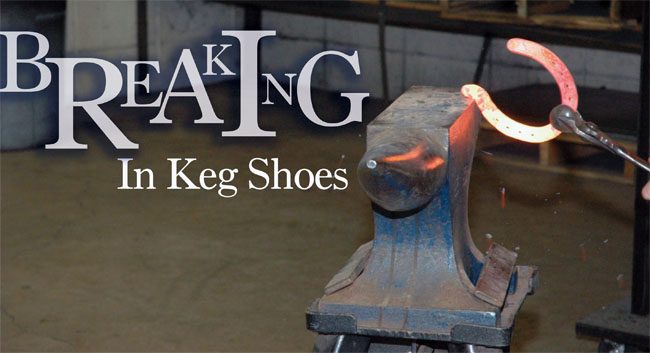American Farriers Journal
American Farriers Journal is the “hands-on” magazine for professional farriers, equine veterinarians and horse care product and service buyers.

MODIFICATIONS ARE ESSENTIAL. Part of being highly efficient in shoeing is knowing how to modify every style of shoe that you’ll be using for different purposes. Once you learn more than one way to make shoe modifications, then you can decide the ways that are best for you to use under varying circumstances.
When you buy a new pair of boots, they may need a little “breaking in” before they’ll fit comfortably. Travis Koons, the certified journeyman farrier from Romoland, Calif., finds the same thing is true of most keg shoes. He breaks in the shoes before he nails them on, paying particular attention to the heels and the toes.
With keg shoes, Koons constantly hammers down the inside edge of the shoe. He finds many keg shoes tend to swell when heated in a forge.
“The heels on many keg shoes are rough and rounded and the shoes are usually a manufacturing compromise as to what a horse may actually need,” he says. “I place a clean edge on the heels by just knocking off the inside edge with a hammer or a grinder.”
When forged properly, Koons believes a rocker toe should make a 90-degree angle with the hoof’s horn tubules.
“Not all horses need rocker toes, but I rocker most of the toes,” he says. “I like one that is equal to half the width of the shoe stock. The actual amount depends on the needed amount of breakover, but I may…